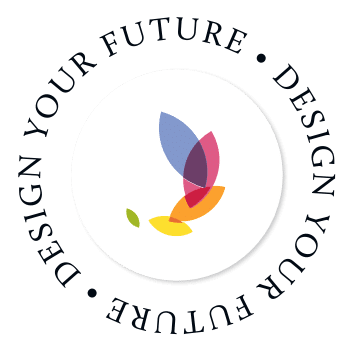One of the many things I find interesting about the human condition is the contradictory relationship most of us have with change. We resist it because we find comfort and safety in the familiar. Yet, we crave it because it is essential to our personal growth and well-being. Although some transitions are difficult, especially when unwelcome, they also present an opportunity to explore how to reinvent yourself, make the most of your new circumstances, and live a fulfilling life.
After spending over fifteen years guiding clients through the process of reinvention, I want to share some insights and tips you may find helpful.
Why is Reinvention Necessary?
Focusing on what could go wrong if we venture too far from what is “safe” is human nature. Yet, change is inevitable, so the journey of self-reinvention occasionally becomes necessary for everyone. Here are a couple of examples.
You Reach a Milestone or Experience a Life Changing Event
As we go through life, we set goals, reach milestones, and experience many joys and disappointments. For instance, you might graduate from college, get married, celebrate a significant birthday, get a promotion, become an “empty-nester,” and eventually retire. We plan these events, but we can also experience unexpected ones such as a divorce, layoff, death in the family, or health scare. Each situation, even the expected and desirable ones, results in a transition.
If you are prepared and know what to do next, transitioning from one life circumstance to another can go smoothly. But, more often than not, these things happen, and we feel lost, even if we knew the change was coming.
For example, maybe you turned 30 or 40 and feel unsettled because your life doesn’t look anything like you thought it would at that age. Or, perhaps you went through a divorce or had to face losing a loved one. You would expect to feel tremendous uncertainty and loss after such an event. However, you might not expect to experience an identity crisis because you no longer know who you are. That’s when you must figure out how to reinvent yourself.
You Experience the Impact of Rapid Change

Ironically, our desire for safety also puts us at risk of becoming professionally and personally stale or, worse, obsolete. Why?
Many of us grew up believing we would get an education, build a family, and choose a career that would carry us through to retirement. Yet this mindset reflects an archaic reality, with a rigid definition of “family” and pensions for employees who would only live to about 73 years of age. That time is long past.
In today’s world, many of us live into our 90s, and we are not the same person at 6, 18, 33, 45, or 72. Our lives are flush with new people, cultures, norms, and a fluid definition of family and community.
In other words, we are in a period of unprecedented volatility, uncertainty, complexity, and ambiguity. The underlying calculations behind the traditional “safe” choices no longer apply as entire industries, professions, and communities shift. We must evolve, adapt, and continually redefine what it means to be part of a family and a productive member of society so we can step into each stage of our lives with a sense of purpose and passion. Anything less can make us feel stuck and incapable of moving forward.
What Does it Mean to Reinvent Yourself?
In some ways, reinvention is about aligning ourselves and our mindset with who we have become.
Reinventing yourself doesn’t mean you have to throw everything out and start over. Instead, it can be an iterative process where you examine your identity, experiences, and cultural conditioning to pinpoint how these things have shaped who you are and your outlook on life. In doing so, you start recognizing what works, what doesn’t, and where your strengths lie. From this framework, you can explore all possible paths forward and choose a future that will be meaningful and satisfying to you.
The interesting thing about reinvention is that it is necessary and achievable for everyone. It doesn’t matter how old you are, what gender you identify with, or what circumstances you face. However, to reinvent yourself, you need to adopt a growth mindset. You must surrender to the process and step outside your comfort zone to live the life that is right for you.
Let’s look at some strategies to help you navigate the reinvention process.
How to Reinvent Yourself: 6 Tips for the Journey
Although I wish I could give you a step-by-step process for your reinvention journey, it’s rarely linear. Instead, it is more of a cycle.
Reinventing yourself is about building an awareness about everything contributing to your sense of discomfort and deciding what is true, what isn’t, and what that means for your life choices. Then, you align your new viewpoint with your personal and professional goals so you can create an action plan. This process inevitably leads to new revelations or levels of awareness that start the cycle all over again. Below are a few tips my clients find helpful.
1. Acknowledge, Experience, and Reflect on Your Feelings
Some situations that prompt us to reinvent ourselves can be painful, especially when they are thrust upon us, leaving us disappointed. Be patient and compassionate with yourself, and take the time to feel whatever you are feeling. You may need to grieve what you are leaving behind, whether it is a person, a job, a version of yourself, or a belief that is no longer (or never was) true. And you may need to do that before, during, and throughout your reinvention process.

2. Expand Your Mindset to All Possibilities
Then, once you are ready to move forward, consider what you wish to change. When I start working with someone new, I’ve learned that one of the first exercises we must go through is one that helps them understand that anything is possible. That is critical to our work together.
For example, if someone enters the reinvention process with a narrow view of success or happiness, they will perceive anything short of that as a failure. This viewpoint means that they must execute their plan with utmost precision, which creates the kind of pressure that would make anyone miserable.
In this case, I would help them reframe what it means to experience those things. In doing so, they become aware of a broader range of possibilities. This exercise is tremendously helpful, especially to people who don’t know exactly what they want. By expanding their definition, they begin to create a vision and open themselves up to evolving into something even better than what they could imagine.
3. Give Yourself the Gift of Time
As Einstein stated, time is relative – our perception of time depends on our frame of reference. Many people feel impatient when reinvention doesn’t happen immediately and give up within a month. But once you accept that reinventing yourself is a process and you have the rest of your life to complete it, a sense of ease will set in as you surrender to the experience.
When I guide people through a transformative journey, they often check in later to share how their lives have changed. More often than not, they also tell me that they realize now that the coaching was simply a catalyst to a longer process. Even clients who manage a rapid reinvention (within six months) report that the change had been a “long time coming.” They just needed the right tools to make it happen.
4. Reimagine Your Stories
We have all had a mix of good and bad experiences that influence our outlook and choices in life. Examining such experiences and reframing those narratives can be a powerful technique when learning how to reinvent yourself.
For instance, if you are considering a career change but are hesitant to take the plunge, jot down all the stories you are telling yourself about that potential change. Then, dissect each one to determine where it came from and whether it’s still true for you today.
Perhaps you selected your current path because it was the “safe” route – a job you knew how to do or a choice that satisfied your family’s expectations. Put another way, you compromised. If you acknowledge that this is what happened and that your life is different now, permitting yourself to pursue other avenues will be easier.
5. Explore Possibilities on a Small Scale
I mentioned earlier that reinvention doesn’t require a complete do-over but a series of iterations throughout your life. In this vein, it can be helpful to step into certain changes one at a time. Look for opportunities to try things on for size and give yourself a safe place to experiment and make mistakes before going full bore.
For example, when parents drop their children off at college, many feel a sense of emptiness and start looking for ways to fill that space. However, remember that these moments, though uncomfortable, are an opportunity. Before you rush into any commitments, take the time to explore the person you have become and how that might influence your next steps. Then, try a few things before committing to ensure that whatever you do next is rewarding.

6. Give Yourself Permission to be Uncomfortable and Ask for Support
Everyone struggles with change, so it’s critical to be kind to yourself as you examine the possibilities and to take mental breaks whenever needed. However, it’s also important to understand that discomfort is normal because it means you are going through a meaningful change.
However, you don’t have to do this alone. Find a friend to confide in, an advisor or therapist, or even a transformational coach to help you navigate this journey. When you tell others about what you are trying to do, you’ll find it easier to stay on course because they will hold you accountable.
The Bottom Line
Learning how to reinvent yourself isn’t an exercise in self-indulgence. It is a necessary skill that will help you adapt to our changing world so you can live a happy, fulfilling, and productive life. If you find the idea of doing this alone overwhelming, don’t hesitate to ask for help. You are also welcome to browse our resources, where you will find an informative quiz and helpful worksheets.
Editor’s Note: This blog post was originally published in April 2021 and then updated for accuracy and thoroughness in September 2024.





